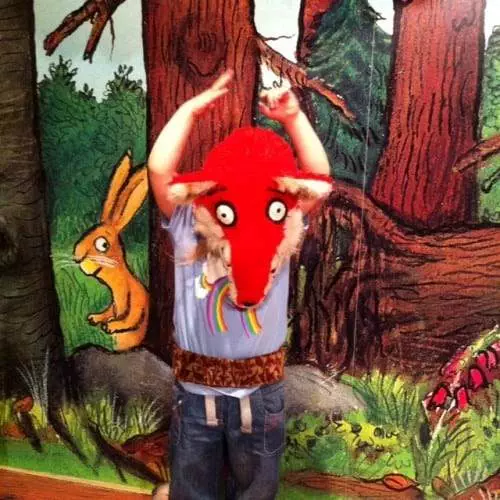Oh help! Oh no! It’s a Gruffalo! The Julia Donaldson exhibition at Seven Stories in Newcastle-upon-Tyne is worth the trip north, says @DeanVipond …
A good few weeks ago, whilst on holiday in Northumberland, I took my family further north, to see the Julia Donaldson exhibition at the fantastic Seven Stories – the museum of children’s books in Newcastle Upon Tyne.
Anyone with children under the age of, say, seven, will be very familiar with Donaldson’s work – The Gruffalo, The Snail and The Whale, A Squash and A Squeeze… they’re the kind of books that get read again and again. The work of Julia Donaldson is now as firm a part of childhood as Dr Seuss, Roald Dahl and Dick Bruna.
As with the best children’s books, there’s much to enjoy for adults too – the cleverness of the rhymes, and the often extremely complex meters in which passages are written, make them fun to read out loud, and the outstanding and characterful illustrators Donaldson has collaborated with, makes them just as much fun to look at.
Child-friendly and interactive
So it was with considerable excitement that our troupe of children and adults (two each) entered the museum. No messing around, we headed straight up to the Donaldson exhibition. The children were immediately impressed at the presentation, with large characters from the books adorning the walls. What impressed me was that almost everything is designed for the child – almost all of the pictures, texts, headphones, etc, are at child-accessible height, meaning I had to kneel down to inspect many of the pictures.
Interactivity is key to the exhibition – there is a dressing up section, with some marvellous outfits and masks of characters from the books, as well as a small stage to play things out. My daughter particularly liked the full Gruffalo’s Child outfit.
A lot of the interactivity was thoughtful, and reflected the themes of the books. The section for A Squash and A Squeeze, for example, featured a large wendy house, and huge toy animals, to try and fit inside. Whereas Cave Baby was represented by a cave-like area, with children’s drawings projected, to represent cave paintings.
Sketches and notes
That’s not to say there isn’t anything to enjoy for grown-ups. There’s plenty of Donaldson’s life history displayed on the walls (a bit higher up), and there are some of her note books in glass cases. This was particularly exciting, as you can see Donaldson working out how to make lines scan and read properly. It’s a bit like hearing early demos of classic songs. For example:
Silly old fox & owl & snake
They didn’t need to shiver & shake
All of them really ought to know
My favourite food is… gruffalo!
Unfortunately, despite all of this minutiae on offer, I didn’t get chance to make the most of it, as it’s hard to concentrate when you have to keep your eye on two children tearing about the place in opposite directions. Nevertheless, it was great to see.
Amazing illustrators
Of course, the illustrators Julia Donaldson collaborates with are a vital part of the character of her books. They’re all represented here – Nick Sharratt, David Roberts, all have their work presented in large format, along with quotes from the illustrators themselves. However, the real star from a visual standpoint is, of course, Axel Scheffler. Despite Donaldson having worked with many illustrators, it’s Scheffler’s work which has become as synonymous with her books, as Quentin Blake’s illustration has with Roald Dahl.
Scheffler fans have plenty to enjoy – early sketches, paste-up layouts of book spreads, as well as original paintings from all the books. One non-book picture showed a shot of The Gruffalo reading a copy of Where The Wild Things Are, which is a lovely detail. The character, colour and brushwork are all there for close inspection, and it was lovely to see.
The exhibition is laid out in a loop, and initially it can feel a quite small and a little disappointing (especially if you’ve travelled a fair way), but we soon realised we’d been round it three times, seeing different things each time. Again, the dense, child-oriented scale, clearly designed for excitable, short attention spans, is deceptively smart.
It’s on until February 2013, so there’s still plenty of time to go and see it. And you should.

